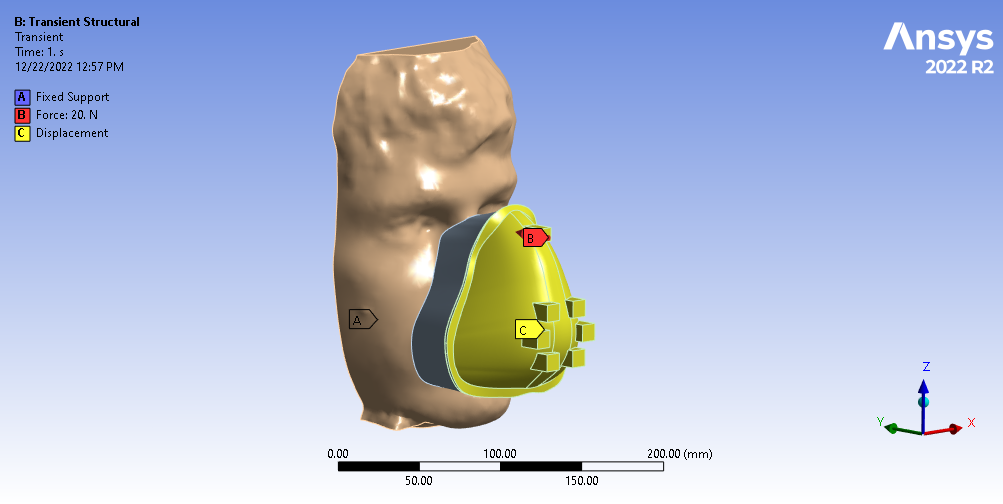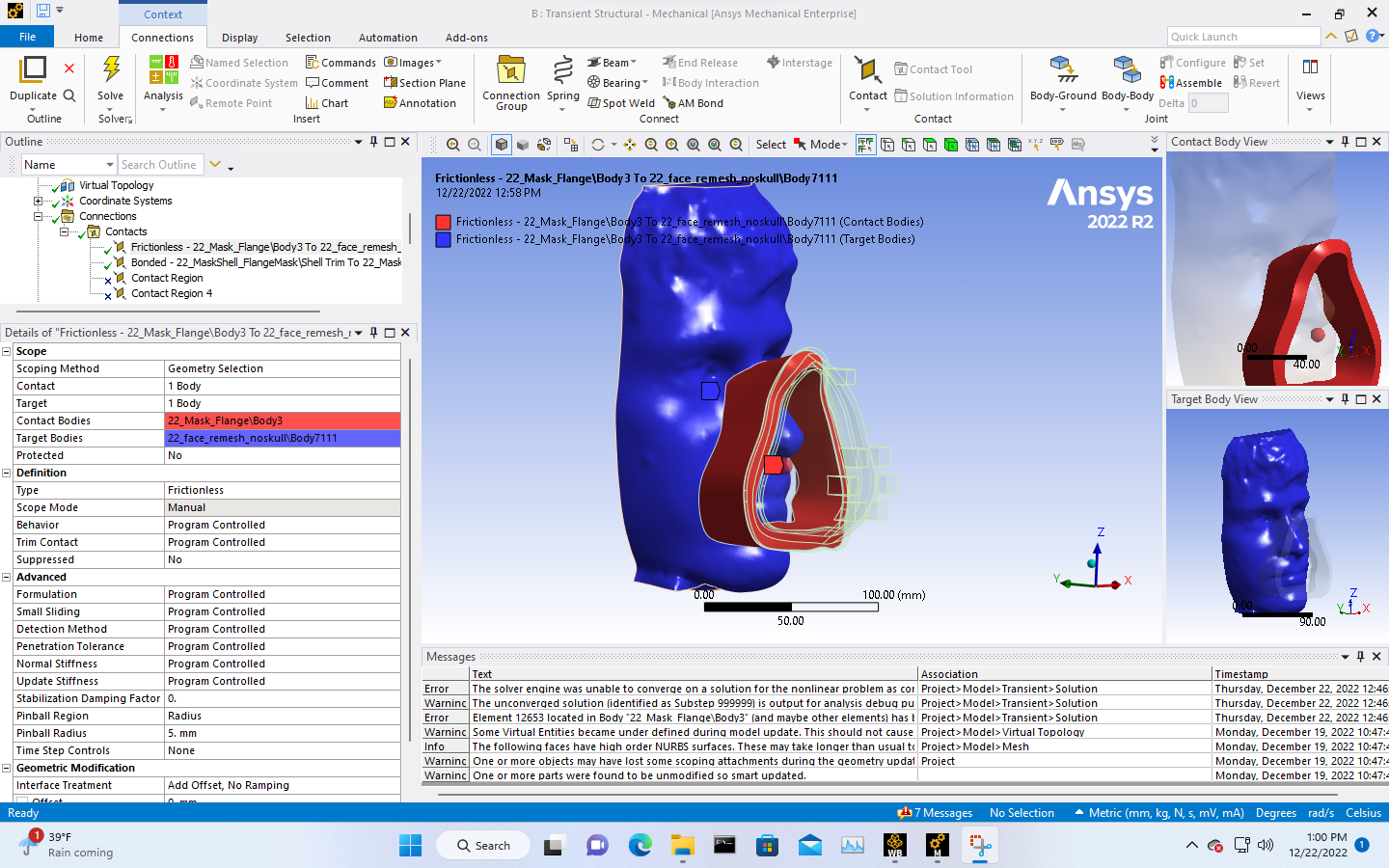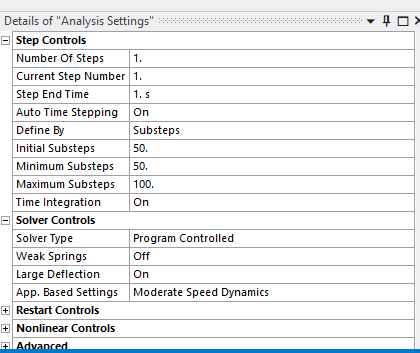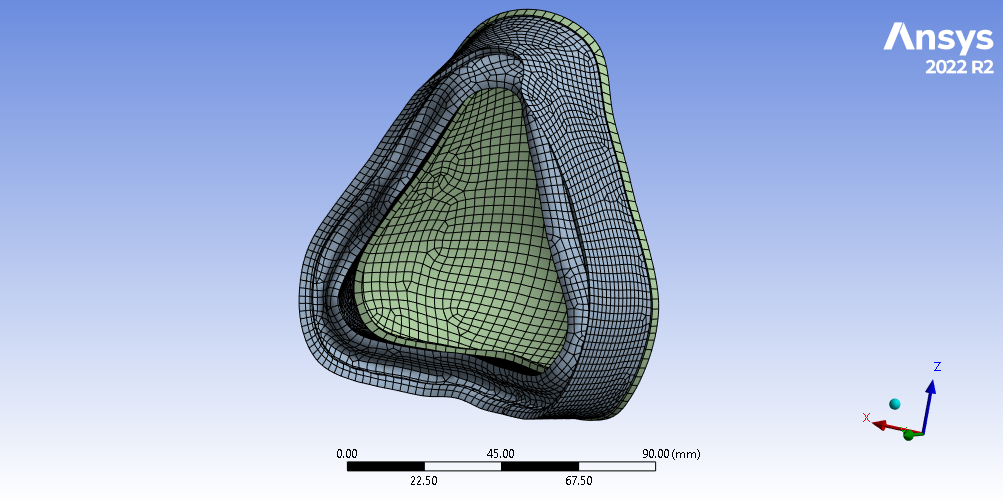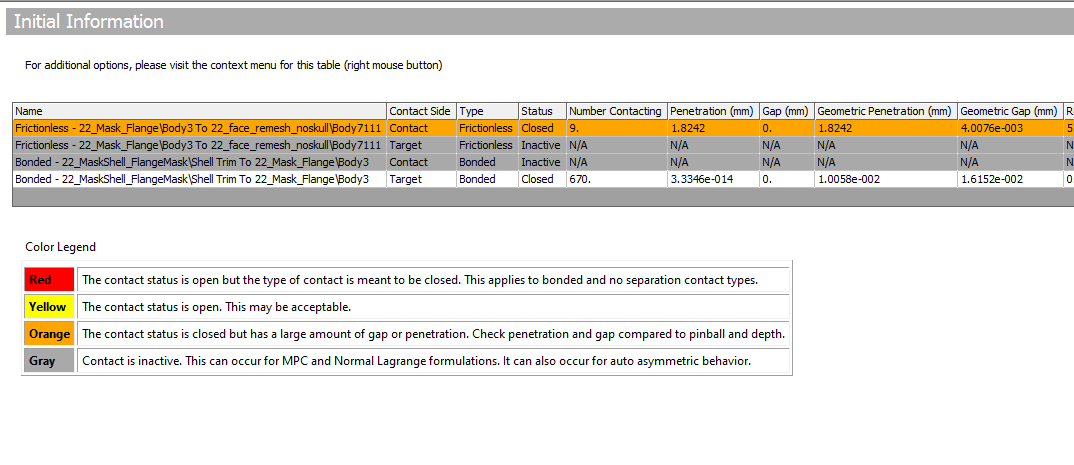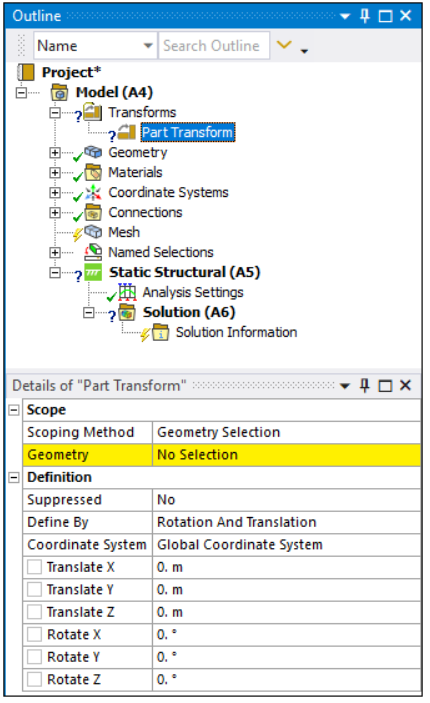-
-
December 22, 2022 at 6:12 pm
emartell
SubscriberI am trying to run a transient structural analysis to simulate the interaction between a mask and a face. However, the mask just keeps going through the face without contacting it. All meshes are hex mesh. The face is defined as linear elastic cheek skin with E = 31 kPa, v = 0.49. The mask cushion that contacts the face is linear elastic with E = 151 kPa, v = 0.47. The mask shell is ANSYS Granta Polycarbonate Plastic. The mask geometry is offset from the face by 5 mm, done in SpaceClaim.
The boundary conditions are a fixed support at the back of the head, a displacement boundary condition that only allows displacement in the y axis, and a force condition of 20 N in the y direction applied on 3 nodes of the mask: the top and the two sides.
The contact between face and mask cushion is frictionless. The mask cushion and mask shell are bonded. I tried adding a pinball radius of 5 mm to the frictionless contact but that hasn't helped.
I have run it with the following analysis settings.
Here is an additional picture of the mask for reference.
Any help would be greatly appreciated. Thank you!
-
December 22, 2022 at 6:38 pm
peteroznewman
SubscriberUnder the Connections folder, insert a Contact Tool then right click on it and Generate Initial Contact Status. You need to see the contact is Near Open. If it is Far Open, you need to increase the size of the Pinball Radius.
I was expecting the contact between the cushion and face would be Frictional.
Also, it will save some time if you move the mask until it is just touching the face instead of having a large gap.
-
December 22, 2022 at 6:54 pm
emartell
SubscriberHi Peter,
Thanks for the quick response. Here are the results of the contact tool.
I am planning on using frictional contact eventually but wanted to start with frictionless and go from there.
Can I use the adjust to touch feature in the Geometric Modification to move the mask? When the mask is in its touching position (before I offset it), it has a bit of geometric penetration that I was trying to avoid in the transient structural analysis.
-
December 22, 2022 at 7:09 pm
peteroznewman
SubscriberYou may find that Frictional contact has an easier time converging that Frictionless contact becuase the latter can be unstable on an uneven surface.
You can use Part Transform to move the mask in Mechanical.
I suggest you use Static Structural to move the mask toward the face. What benefit do you get from Transient?
-
December 22, 2022 at 7:19 pm
emartell
SubscriberOk, I will give frictional contact a try.
I do have a version of this model with static structural analysis and bonded contact. The bonded contact, however, yields unrealistic results where the deformation only occurs at the outside and inside edge of the mask cushion, when really the mask cushion deforms and opens up in real life. I was hoping to use transient to get a more realistic result.
In my static structural analysis, there is an initial penetration of 1.8504 mm. Can I use that value in the Part Transform to adjust the mask to touch?
-
December 23, 2022 at 11:44 am
peteroznewman
SubscriberI agree you don’t want bonded contact between the face and the cushion.
Transient isn’t going to give you a more realistic result than Static Structural. Transient is useful when the inertia forces (mass x acceleration) are significant compared with elastic forces (stiffness x deformation). Transient would allow the solution to begin in the case where there are only applied forces and contact forces on the mask. The solver will compute the inertia forces to put the mask in dynamic equilibrium.Imagine having the mask 1 mm off the face and letting go at t=0. It can accelerate and slap into the face. You can’t do that in Static Structural. If all you have is forces and contact, you need the contact to be frictional and to be initally penetrating in enough places so that there is a static equilibrium in all 6 degrees of freedom (3 translations, 3 rotations), otherwise Static Structural will give an error at the beginning.
Adding supports such as Remote Displacement in Step 1 of a Static Structural can overcome the problem of getting started. The Remote Displacement can move the mask closer to the face allowing the cushion to build up contact with the face. In Step 2, the Remote Displacement can be Deactiviated so that only forces and frictional contact forces are holding the mask against the face.
Static Structural models with initial penetration in the frictional contact can often resolve. If the solution fails to converge, you can use Part Transformation to move the mask (or face) to a position where the contact has a smaller penetration.
-
December 24, 2022 at 5:50 pm
emartell
SubscriberI tried running my Static Structural model with the 2 steps as you described and was able to achieve convergence with a frictional contact.
I really appreciate your help.
-
- The topic ‘Contact object passing through target object in transient structural’ is closed to new replies.



-
3632
-
1313
-
1142
-
1068
-
1008

© 2025 Copyright ANSYS, Inc. All rights reserved.

